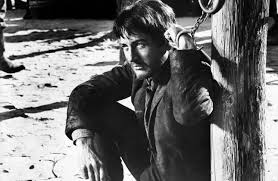With the passage of the Eighteenth Amendment to our United States Constitution and the Volstead Act on October 28, 1919, the manufacture, sale, and distribution of intoxicating spirits was made illegal in the United States. The Prohibition Act went into effect in 1920 and pushed the consumption of booze underground, creating the Roaring Twenties and the age of the big city gangster.
Seen as a "Noble Experiment," Protestant, Baptist, and women's Temperance groups believed that Prohibition would improve American life and guide our nation towards prosperity and morality. The evils of alcohol were readily visible with scenes of public drunkenness, violence, and domestic abuse of women and children commonplace events.
Henry Ford was a strong advocate of the Temperance movement hoping to improve the attendance of his workforce--many of whom were drinkers of alcoholic beverages. The Klu Klux Klan was also a supporter of the movement for anti-immigrant reasons. Anti-German sentiment after World War I was unsympathetic with the German tradition of beer drinking. The Irish Catholics had a taste for hard liquor while Italian and French Catholics enjoyed their wine. All were opposed to the alcohol ban on cultural grounds.
A loophole in the Volstead Act did not specifically prohibit the use of intoxicating beverages. Physicians were allowed to prescribe whiskey for medicinal purposes. Patients could buy a prescription from a doctor for $4.00 and then take it to a pharmacy to be filled. Doctors were doing a box-office business. Because of rampant abuses in the first years of Prohibition, a law was passed to allow physicians to write no more than fifty prescriptions per year and patients could obtain no more than one gallon of whiskey per month.
Homemade wine and apple jack could be produced for personal consumption so farmers and home vintners could preserve their grape and apple crops over the winter months. Sacramental wine for religious purposes was also allowed to placate Catholic and Jewish voters.
Prohibition began the era of smuggling distilled liquor from Canada, Cuba, and the Bahamas. There was also wildcat liquor production in the form of moonshine and bathtub gin. Moonshine production increased in Appalachia in the backwoods and hollows of the Smokey Mountains. Farmers realized that converting their corn crops to alcohol was ten times more profitable than transporting sacks of grain for human or animal consumption.
 |
| Typical still setup |
 |
| Scene from "The Roaring Twenties" with James Cagney and Frank McHugh. |
Because of increased demand, the general quality of homemade liquor declined during Prohibition and was harsh to the taste. This created the popularity of the cocktail and the highball to cut the bitterness of the hooch. In those days, cocktails contained three or more ingredients--alcohol, a source of sweetness (honey, sugar, or molasses), and a bitter/citrus flavor to mask the harshness. Highballs were simply liquor and a mixer like 7-Up to flavor and dilute the alcohol.
The following link from the History Channel gives a three minute, animated survey of Prohibition in America. Wait for the ad to run: https://www.history.com/topics/roaring-twenties/prohibition/videos











